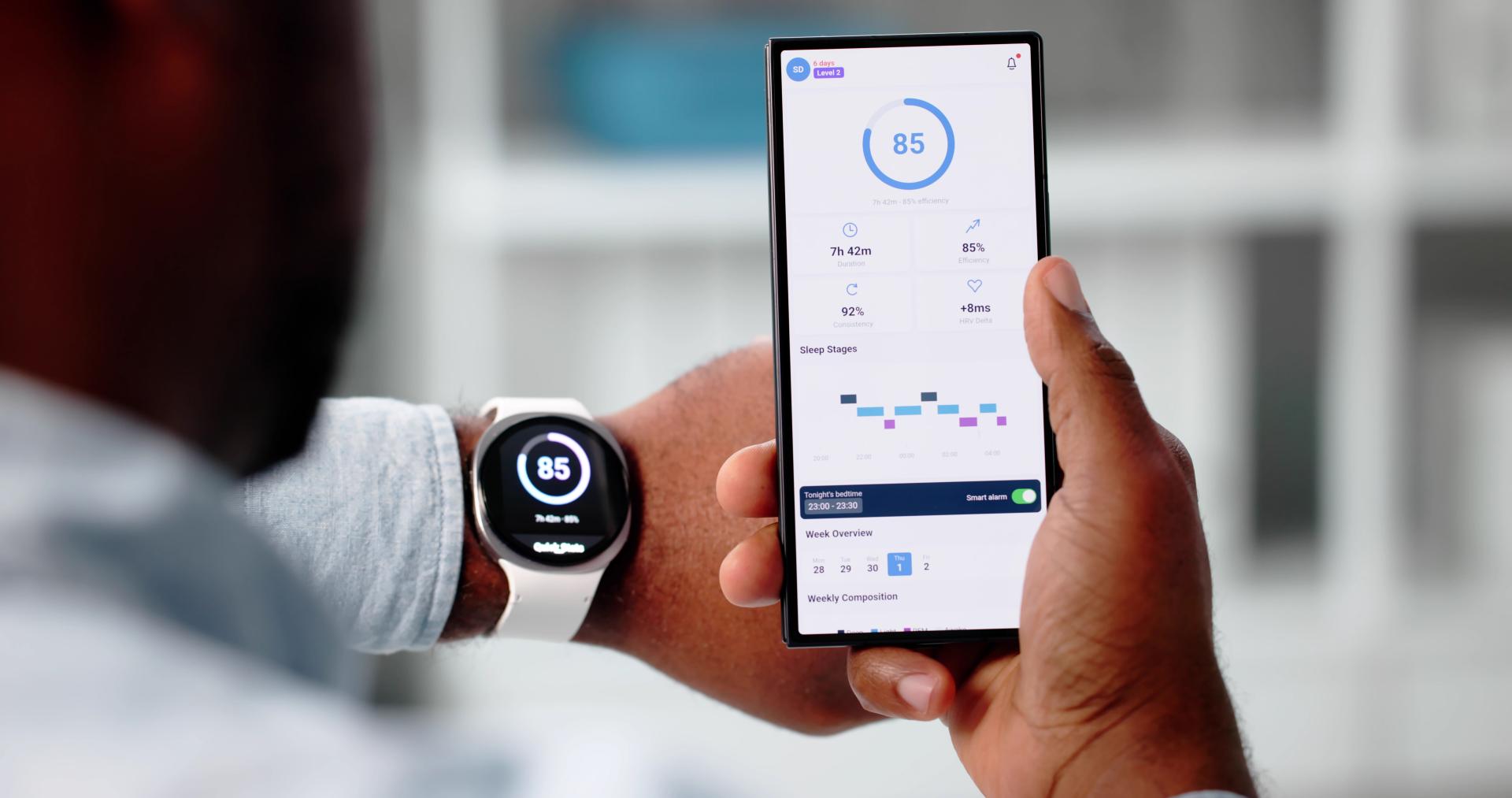Helping your child understand fitness content online
From workout tips on TikTok to transformation videos on YouTube and fitness trackers that link to social media, health and fitness content is everywhere online. For many young people, this content can be motivating but it can also create pressure, encourage comparison, and promote unrealistic or unhealthy ideals.
Helping your child develop media literacy skills and the ability to think critically about the content they see online can support healthier habits, reduce the impact of harmful messages, and encourage more positive digital experiences.
What does fitness content look like online?
Fitness and health content is shared across many platforms. For example, your child could see it when:
- watching influencer workout routines on TikTok or Instagram
- seeing ‘before and after’ body transformation videos on YouTube
- using apps linked to smartwatches or fitness trackers
- following food and exercise plans shared by content creators
Much of this content is presented as motivational or aspirational. But it’s often created by people with little or no expertise and shaped by algorithms designed to keep users watching.
What are the risks?
There are many potential risks in following online fitness and health content. These can include:
1. Unrealistic body standards
Social media often shows only the best angles and most ‘perfect’ results. This can create pressure to look a certain way, even if those images are filtered, edited or genetically unachievable.
2. Misinformation and poor advice
Some fitness creators share unverified or extreme routines. Your child might come across restrictive diets, unsafe workouts or claims that lack scientific evidence.
3. Comparison and low self-esteem
Seeing others’ results can lead to unhealthy comparison. Children may feel they’re not doing enough, or not good enough, based on what they see online.
4. Algorithm-driven content spirals
Once a young person watches or likes fitness content, platforms may show them more of the same. This can create an unbalanced feed full of diet or exercise posts, which may increase pressure.
Does building media literacy help?
Children are still developing their understanding of health, identity and self-image. Seeing endless content about workouts, appearance or eating habits can have a strong influence – especially when it comes from influencers they trust or admire.
Here are five simple steps to help them think critically about what they see.
1. Talk about what they follow
Show interest without judgement to open the conversation and start to understand the content they watch. For example, you could ask: “Who are your favourite fitness creators right now?” or “What kind of videos come up a lot?”
2. Discuss the content together
Once you have opened up that conversation, you could ask to watch some content together. You might then discuss some of the motivations behind the content – as well as what it represents. For example, discussing:
- Who made this?
- Why are they sharing it?
- Does this reflect real life?
These questions help build habits that apply to all kinds of online content, not just fitness.
3. Discuss how the content makes them feel
Ask how certain videos or posts affect their mood, motivation or self-esteem. Think about the impacts or consequences of watching this content. If they feel worse after watching something, it’s a sign to step back.
4. Challenge ‘one-size-fits-all’ advice
Discuss the possible consequences of following fitness or health advice found online that isn’t suitable for them. Highlight that it’s best to get advice from a qualified professional, like a GP, nutritionist or personal trainer.
5. Balance their feed
It’s great if your child is looking to be healthy. Encourage this, and help your child find a range of content that promotes positive wellbeing, including creators who promote body diversity, balance and realistic lifestyles.
Want to find out more?
Want to develop your own digital skills and confidence? Everyday Digital has articles and videos to help you support your child in today’s online world.

